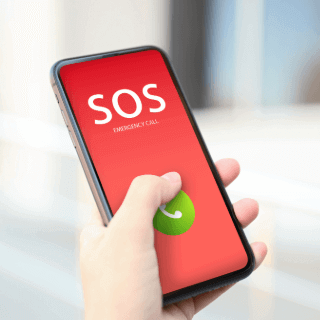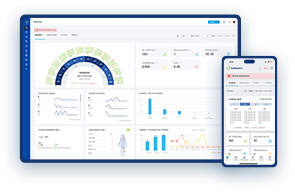
Leveraging Technology for Lone Worker Safety: A Modern Approach
Lone workers, from maintenance personnel in remote areas to home healthcare providers, navigate unique safety challenges due to their isolation from immediate support. Ensuring their safety is paramount as they encounter risks that can delay emergency responses and exacerbate situations. Technology plays a crucial role in enhancing lone worker safety by offering innovative solutions for connectivity and accident prevention.
Advancements in wearable devices, mobile applications, and other technological tools are revolutionizing the approach to managing lone worker safety. These technologies provide real-time monitoring, quick access to assistance, and valuable data to help prevent accidents.
This blog post explores the transformative impact of technology on safeguarding the safety and well-being of lone workers.
Real-Time Location Tracking
Real-time location tracking enhances lone worker safety by providing precise information on their whereabouts. Utilizing GPS and other location-based services, it ensures that in case of an emergency, help can be dispatched to the exact location without delay. This technology is crucial for workers in remote or vast areas, keeping them connected and significantly improving response times during critical incidents. The ability to monitor location in real time not only offers peace of mind to both employers and employees but also forms the foundation of a responsive and effective safety strategy.
Automated Check-ins and Alerts
Automated check-in systems are a game-changer for lone worker safety, offering a simple yet effective way to ensure workers are safe and accounted for. These systems require workers to regularly check in via a mobile app or device, with missed check-ins triggering automatic alerts to supervisors. This ensures that any potential issues are identified and addressed promptly, minimizing risks and providing peace of mind for both workers and employers.
Wearable Safety Devices
Wearable safety devices equipped with features like fall detection, panic buttons, and health monitoring offer an extra layer of protection for lone workers. These devices can detect accidents or health crises and automatically alert emergency services or designated contacts. Wearable technology empowers workers with the assurance that help is on the way, even if they’re incapacitated and unable to call for help themselves.
Related read: Our listing of the best Health and Safety Software.
Emergency Communication Tools

In critical situations, having reliable emergency communication tools can make all the difference. Tools that facilitate one-touch alerts or establish direct communication lines with emergency responders ensure that lone workers can quickly and easily signal for help. This immediate connectivity can significantly reduce response times and is essential for addressing emergencies effectively.
Incident Reporting and Analysis
Modern technology streamlines the incident reporting process, allowing lone workers to easily report hazards or incidents through mobile applications or software platforms. This real-time data collection and analysis help identify trends and areas for safety improvements, enabling organizations to proactively address risks and prevent future incidents.
AI and Predictive Analytics
Artificial intelligence (AI) and predictive analytics are transforming lone worker safety by anticipating potential hazards before they occur. By analyzing data on past incidents, environmental conditions, and worker behavior, AI can predict risks and suggest preventative measures. This forward-thinking approach shifts the focus from reaction to prevention, enhancing overall safety.
Virtual Training and Augmented Reality

Virtual and augmented reality technologies are revolutionizing training for lone workers, allowing them to experience realistic scenarios without the associated risks. This immersive training prepares workers for a wide range of situations, from navigating hazardous environments to responding to emergencies, ensuring they are well-equipped to handle their duties safely.
Health Monitoring
Technological advancements in health monitoring enable real-time tracking of vital signs and environmental conditions, alerting workers and supervisors to potential health hazards. This can include alerts for extreme temperatures, toxic gas levels, or abnormal heart rates, ensuring immediate action can be taken to mitigate risks.
Legal and Compliance Benefits
Technology plays a crucial role in helping organizations comply with safety regulations and standards. Digital record-keeping, automated reporting, and compliance tracking simplify the management of legal obligations, ensuring that businesses can easily demonstrate their commitment to worker safety.
Integration Capabilities
The integration of safety technologies creates a cohesive ecosystem that enhances lone worker protection. By ensuring that devices, apps, and software communicate seamlessly, organizations can develop a comprehensive safety strategy that covers all aspects of lone worker safety, from real-time monitoring to emergency response.
Ben Johnson is a dedicated Customer Success Executive at Safetymint. With a strong commitment to excellence, Ben works closely with customers to ensure they fully leverage the capabilities of Safetymint to its fullest potential, aiming to significantly reduce or mitigate safety risks and incidents.




